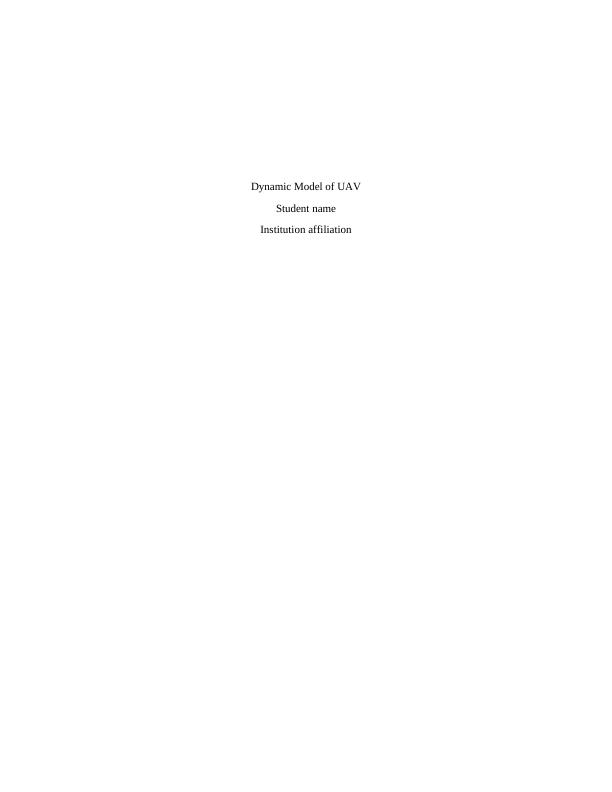Dynamic Model of UAV
Achieving precise state estimation for unmanned aerial vehicles using deep learning-based neural network training.
5 Pages1649 Words33 Views
Added on 2023-01-17
About This Document
This study material provides an in-depth understanding of the dynamic modeling of Unmanned Aerial Vehicles (UAVs). It covers the equations and principles used in dynamic modeling and control of UAVs. The material also discusses the applications of dynamic UAVs, including humanitarian relief. The content includes a literature review, sample models, and references to relevant research papers.
Dynamic Model of UAV
Achieving precise state estimation for unmanned aerial vehicles using deep learning-based neural network training.
Added on 2023-01-17
ShareRelated Documents
End of preview
Want to access all the pages? Upload your documents or become a member.
MGT5STR Strategic Management - Drones Industry
|9
|1691
|258
Conceptual Design Analysis of Medium Size Wings Type Surveillance UAV
|14
|3297
|447
Multi-Rotor Drones: Types, Applications, and Challenges
|35
|10372
|194
Drones and the Future of Aviation and Aerospace Industry
|5
|988
|222
Innovations and Technology - Report
|14
|3073
|16


